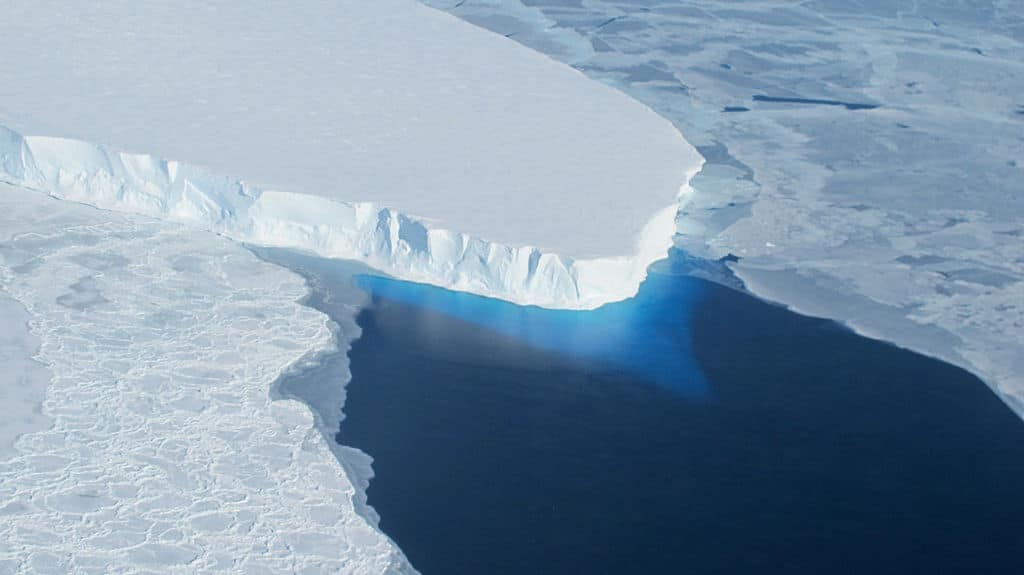For the first time, scientists analyzed the critical grounding line, where ice first projects into the sea, of Antarctica’s vast Thwaites glacier, which could increase sea level rise by half a meter. While they discovered the speed of melting is slower than initially expected, they also found warmer water is making its way into openings of the glacier.

All ice on Earth is threatened by climate change, but Thwaites is even more problematic because its underwater base is also being eroded. The glacier, which is about the size of Florida, is nicknamed the “doomsday” glacier because if it were to melt, it would accelerate sea level rise. It’s the widest glacier on Earth (120 kilometers) and its ice loss currently contributes to 4% of all global sea level rise.
Previous studies have found the glacier is now in a phase characterized by “rapid retreat,” or “collapse,” when a broader geological timeline is considered. A study by physicist Alastair Graham at the University of South Florida last year found that, despite observations suggesting the melting rate had slowed, it will likely accelerate soon.
“If an ice shelf and a glacier are in balance, the ice coming off the continent will match the amount of ice being lost through melting and iceberg calving. What we have found is that despite small amounts of melting there is still rapid glacier retreat, so it seems that it doesn’t take a lot to push the glacier out of balance,” Peter Davis, a study author, said in a statement.
A close look at the glacier
A team of researchers from the US and the UK spent about six weeks on the glacier in 2019 and 2020, using an underwater robot vehicle known as Icefin to monitor the glacier’s grounding line. Before, scientists had no observations of this very critical point. But with Icefin they could see how big crevasses are in the fracturing of the ice of Twaites.
The researchers first found that warmer water was reaching the crevasses and other openings of the glacier, causing sideways melt of 30 meters or more per year. Britney Schmidt, a study author, told AP that warm water is reaching the weakest parts of the glacier and making it worse, adding this is the kind of thing “we should all be very concerned about.”
Now let’s go to the “good” news. In a separate study, the team also discovered that much of the flat underwater area they explored is melting much slower than they expected – about five meters of melt per year near the grounding line. However, that doesn’t really change the amount of ice that is coming off from the land part of the glacier, Davis told CBS.
The researchers worked on the eastern, larger, and more stale part of Thwaites. They couldn’t safely land a plane and drill a hole in the ice in the main trunk, which is melting faster. Understanding exactly how bad things are on the glacier would require going there. But that would be a very difficult task, with the ice being as unstable as it is now.
Recent data from the National Snow and Ice Data Center showed that there’s now less sea ice surrounding the Antarctic continent than at any time since researchers began using satellites to measure it in the 1970s. While it’s summer, when you would expect to have less sea ice, this year is exceptional, with coverage at 1.91 million square kilometers.









